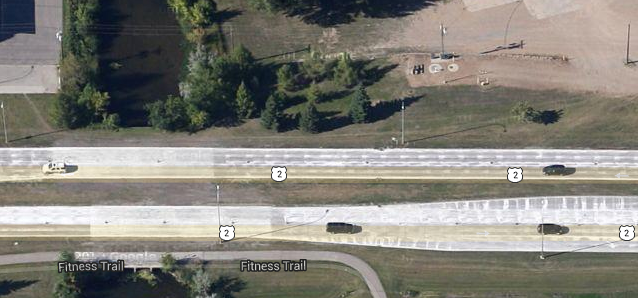MPO Commuter Profile by Kyle Economy.
Some good visualizations here, including this one that shows population changes in the different census tracts:
 |
| Is our urban core decaying? |
Matt Burton-Kelly's home on the Web
MPO Commuter Profile by Kyle Economy.
Some good visualizations here, including this one that shows population changes in the different census tracts:
 |
| Is our urban core decaying? |
The Minnesota Department of Transportation (MnDOT) is developing a Statewide Bicycle System Plan to identify a statewide system of bicycle routes, improve existing facilities, and refine its bicycle planning process.
Public Meeting
6PM – 7PM
Thursday, May 29
EGF City Hall, 600 DeMers Avenue
Online at: www.mndot.gov/bike
Correlating stage and discharge with photos. A work in progress.
Data are from the gage at Red River of the North on Sorlie Bridge. Photos are in order of stage height, increasing.
| Stage | Red River/Red Lake River Confluence | Downtown/Mt. Haga | Riverside Dam |
|---|---|---|---|
| 16 ft |
Gage height ~16.2 ft, no discharge available. 2011-12-10 |
Gage height ~16.3, discharge ~2000 cfs. 2009-09-25 Gage height ~16.5 ft, no discharge available. 2011-12-05. Gage height ~16.9 ft, discharge ~3100 cfs. 2008-06-04. |
|
| 17 ft |
Gage height ~17 ft, no discharge available. 2010-03-13. Gage height ~17 ft, discharge ~3300 cfs. 2012-06-28. |
Gage height ~17.4 ft, discharge 3700 cfs. 2010-09-04. |
|
| 18 ft | |||
| 19 ft | |||
| 20 ft | |||
| 21 ft |
Stage ~21.8 ft, discharge ~10,100 cfs. 2014-05-23. |
||
| 22 ft | |||
| 23 ft | |||
| 24 ft | |||
| 25 ft | |||
| 26 ft |
Gage height ~26.0 ft, discharge 17,800 cfs. |
||
| 26.5 ft |
East Grand Forks bike path under Sorlie bridge is underwater. |
||
| 27 ft |
Gage height ~27.25 ft, discharge 19,000 cfs. |
||
| 28 ft | |||
| 29 ft | |||
| 30 ft | |||
| 31 ft | |||
| 32 ft |
Gage height ~32 ft, no discharge available. 2009-03-23. |
||
| 33 ft | |||
| 34 ft |
“East Grand Forks…4th St underpass at Gateway Drive (HWY 2) closes” (NWS). |


A detailed story in the Herald yesterday: http://www.grandforksherald.com/content/grand-forks-school-district-parking-lot-project-would-evict-apartment-residents
They aren’t really frontiers anymore, but I’m learning more about NoSQL databases and use cases–specifically, what the best way to create a better fossil specimen database is. The use case would be a simple “what do we have and where is it” database for the University of North Dakota paleo collections.
Ideal features are
So far CouchDB and MongoDB are my frontrunners, and even though I think CouchDB has more of the features I’d like to use, the supposedly easier querying in MongoDB has me intrigued. This is definitely not going to be a post comparing the two. It’s possible that MySQL is the right choice, and I am re-exploring that possibility. I’m beginning to shy away from NodakPaleo as it exists right now, because Drupal adds a layer of complexity between researchers and the data. Sure, it’s nice to have all the extras and be able to build a View that you can query a certain way via GUI, but ideally the databse would have an API that could be used by researchers for more interesting things–mapping exercises, mashups with different datasets, etc. For that to happen, I think a JSON/BSON/XML document database may be the best choice in the end.
I just want people to be able to talk to it and use it in a way that makes sense to them. Continuing on, I hope to add more comprehensible thoughts about each option and how I am learning (because I know very little about these systems).
Finally, if you want to see where my free time went during 2007, check out SpecimenDB, the PHP/MySQL version I created. Much of the backend I scraped from ‘PHP and MySQL for Dummies,’ but apparently I learned a lot that summer. This is a new installation, so it obviously doesn’t have any information in it.
I’m not talking about mass gran fondo-style rides like MS150, but the smaller “a few of us are going to ride from X to Y and raise money along the way” type of rides. I’m genuinely curious: do they raise money? I can understand “awareness” as a goal (some of my friends are running across North Dakota this summer), but can riding from North Dakota to Florida really raise $500,000?
Here’s an opportunity for someone to do some Googling and make some graphs comparing how much money can be raised by different charity strategies. I’d be interested in knowing.
Life is like a field full of snow…or a campus quad. The deeper the snow, the fewer paths there will be. Most people are content to walk around the snow on paved paths. Some people will follow paths trodden by others. Only a few will create new paths across the field, either to go to new places or create quicker routes than those that have been established. It’s up to us how much snow we’re willing to walk through, and who we’re willing to follow.
Read the Herald report here: http://www.grandforksherald.com/content/grand-forks-city-council-oks-bike-markers
But council member Tyrone Grandstrand called for the several bicyclists who attended the meeting to speak and say why they want sharrows on University as opposed to other roads.The four cyclists who spoke said they’ll bike on University Avenue with or without sharrows, because it’s the fastest, most direct path between UND and downtown.Council member Ken Vein said if the bicyclists are using University anyway, the city might as well make it safer.
More on this later. The Northern Star Cycling Club was tweeting some of the more interesting commentary from the meeting, but I didn’t audio record it this time.
Update: The official video from the city council meeting is up. Direct download item 4.14.